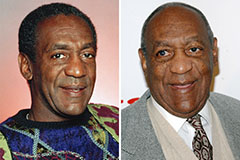Pop Art is a lively and spirited modern art style that emerged in the 1950s, blurring the lines in between classicism and pop culture. This movement celebrates consumerism, mass media, and everyday items, changing them into art.
Among the crucial figures in Pop Art is Andy Warhol, known for his iconic works featuring everyday products like Campbell's soup cans and Coca-Cola bottles. Warhol's art obstacles standard ideas of what can be considered art by elevating mundane objects to the status of fine art. His use of strong colours, repeated patterns, and industrial strategies like silkscreen printing shows the impact of mass production and marketing. Warhol's pictures of celebs, such as Marilyn Monroe, likewise highlight the commodification of fame and the superficial nature of the media. By appropriating imagery from popular culture, Warhol critiques the consumerist society and explores the relationship between art, commerce, and identity.
Another prominent Pop Art artist is Roy Lichtenstein, who drew inspiration from comic strips and advertisements. Lichtenstein's works are characterised by their use of Ben-Day dots, thick describes, and dynamic colours, imitating the visual language of printed comics. His paintings frequently portray exaggerated emotions and remarkable scenes, parodying the melodrama of comic book narratives. Lichtenstein's art plays with the concept of originality and authenticity, as he recreates and modifies existing images. This appropriation of mass-produced imagery concerns the difference in between art and pop culture, challenging the elitism of the art world. Lichtenstein's work, in addition to other Pop Art, democratises art by making it more available and relatable to the public.
Pop Art also explores the themes of consumerism and the impact of mass media on society. Artists like Claes Oldenburg and James Rosenquist create works that show the abundance and banality of durable goods. Oldenburg's extra-large sculptures of daily items, such as hamburgers and ice cream cones, highlight the absurdity and excess of read more consumer culture. Rosenquist, on the other hand, uses fragmented and overlapping images from advertisements to comment on the barrage of media messages. Pop Art's review of consumerism and its welcome of pop culture continue to influence contemporary art, making it one of the most long-lasting and recognisable modern-day art designs. Through its strong and frequently humorous approach, Pop Art challenges audiences to reassess their understandings of art and culture.
 Robert Downey Jr. Then & Now!
Robert Downey Jr. Then & Now! Alexa Vega Then & Now!
Alexa Vega Then & Now! Bill Cosby Then & Now!
Bill Cosby Then & Now! Christy Canyon Then & Now!
Christy Canyon Then & Now! Rossy de Palma Then & Now!
Rossy de Palma Then & Now!